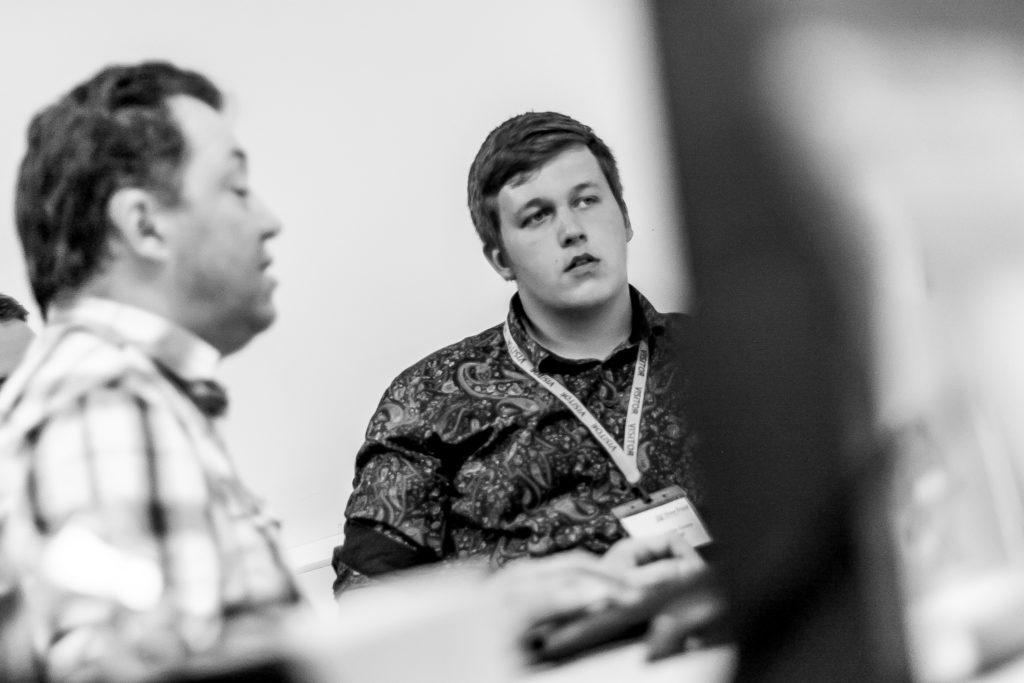Last week the team took a trip down to Neath, South Wales on behalf of Broxtowe Borough Council to witness the website being tested at The Shaw Trust.
Last week the team took a trip down to Neath, South Wales on behalf of Broxtowe Borough Council to witness the website being tested at The Shaw Trust.
Who are the Shaw Trust?
The Shaw Trust is a charity that specialises in creating a better place for people with disabilities to thrive in. As a part of this, their Web Accessibility team take on websites to be tested for accessibility. These website accessibility tests are carried out using Shaw Trust members with genuine disabilities.

The Shaw Trust provided us with an incredibly warm welcome and almost immediately we met the team that would be testing the website. Myself and Jon were introduced to Alan, a fully blind member of the team using a screen reader.
What I learnt
Screen reader
As a content writer and not a developer, I’m going to shy away from the technical aspects and focus on the accessibility issues that were encountered in the content. After having chance to see how the screen reader worked (Alan even turned off the monitor to give us a true impression), I was interested to see what Alan’s greatest challenges are as someone who can’t visually see anything and relies solely on the reader.
He informed me that far too many websites have headers wrong. He explained that too many websites are not ordering their content correctly, H2 tags are not being used after H1 and H3 are not being used after H2. When writing content, H2 should be a sub-heading to the H1, H3 should be a sub-heading to H2, and so forth.
It occurred to me how often I had done this from a purely aesthetic perspective, using H3 after H1 in a blog because ‘it looks better’. Talking to Alan has given me a whole new perspective, because he doesn’t care about how the site looks, he cares about the layout, the physical separation of content through different headers and this is essential or he won’t be able to navigate through any of it properly.
Voice commands
Moving on from Alan, we were introduced to Michael, who uses voice commands to navigate through the website, from his perspective, most of the issues raised were technical and not content related. However, he did tell us to make sure the website isn’t too hard to navigate. This is something that specifically stuck with me as sometimes websites can get carried away content wise and create several more child pages and links than there theoretically should be.
Learning difficulties
After a brief break for lunch, we were introduced to Adam, who has learning difficulties and impaired sight. He uses a zoom function to navigate round the website. Adam gave us a hugely informative tour of the site and on the content side of things, he was able to tell me numerous things that I should look at improving across the board with content.
Adam told me that I should always explain or un-abbreviate abbreviations and acronyms at the first instance of them being used. Despite this being common practice among many content personnel, there have been numerous occasions where I have read copy on a website and had to Google the acronym. He also let me know that from a visual perspective, I shouldn’t include GIFs onto websites, videos that auto play and otherwise distracting images as these can induce seizures among some people.
Mobility impairment
Finally we were introduced to Kevin who had use of only one of his hands, this means he had to navigate using the keyboard. Most issues he experienced were technical and not content related, but it was a valuable chat nonetheless.
I came out of the Shaw Trust with my eyes well and truly opened. For far too long, content writers and web developers have been making websites inaccessible for people with disabilities. This experience has completely changed the way I write and lay out a blog or write any part of a website as I now understand the importance of making a website accessible for everyone.
